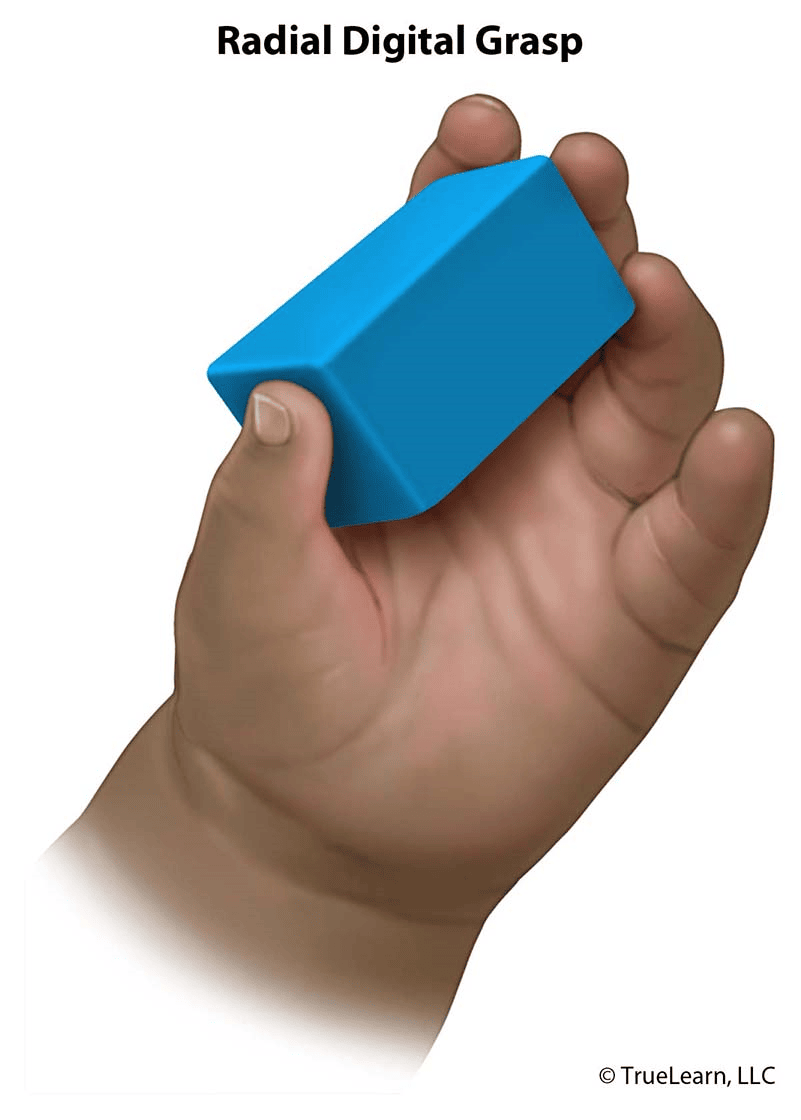Free Practice Question for NBCOT COTA®* Exam Prep
We understand that it’s all about the content. That’s why we have high-yield occupational therapy assistant exam practice questions written and screened by high-performing OT authors. And why our questions are updated on a regular basis so as to ensure our SmartBanks stay up-to-date with exam blueprint changes.
TrueLearn’s SmartBanks are not your typical q-bank. Along with the thought-provoking NBCOT COTA®-style practice questions, the answers and explanations are design to help improve your comprehension of the material. So you’re not just preparing for your OTR® exam, you’re preparing for life after graduation.
Below are some a free NBCOT COTA®-style practice questions to show you what we mean.
Your First Free OTA Exam Practice Question
A 9-month-old child has recently begun to pick up objects with more precision and control using the thumb and index finger. The child is using the side of the index finger to control the items as the items are moved toward the thumb. Which grasping pattern is the child demonstrating?
A) Immature pincer grasp
B) Radial palmar grasp
C) Radial digital grasp
D) Mature pincer grasp
The Answer and Explanation
Did you get it right? The correct answer is A.
At 9 months of age, the immature pincer grasp is demonstrated when the child picks up an object with the thumb and index finger only. In the immature status, the child requires a surface for stability to initiate and maintain the pincer grasp. An immature pincer grasp is also present when the child uses the side of the index finger versus the finger tips.
Grasping Patterns
1. Radial palmar grasp
- 6–7 months of age
- Thumb becomes more involved
- Object is stabilized against the palm
- Fingers and thumb support the object
- Improving precision with grasping

2. Radial digital grasp
- 8–9 months of age
- Object is held between the fingers and opposed thumb
- Fingers are stronger and more coordinated to support an object away from the palm

3. Immature pincer grasp
- 9 months of age
- Isolation of fingers and thumb opposition to grasp an object
- May utilize a raking pattern to pick up the object

4. Mature pincer grasp
- 12 months of age
- Isolated index finger and thumb to pick up an object with increased precision
- Improved finger isolation

Incorrect Answers and Explanations
Answer B: Around 6–7 months, the radial palmar grasp is when the child begins to use the thumb when picking up objects. In the early stages, there will be no space between the hand’s web space and the object being grasped.
Answer C: Around 8–9 months, the radial digital grasp reveals a more precise use of the fingers to move. The child begins to pick up objects with the fingertips, rather than the entire hand. The radial digital grasp is the precursor to the pincer grasp.
Answer D: At about 12 months of age, a mature pincer grasp is present when the child is able to pick up small objects using the tip of their thumb and index finger. The child no longer requires stability from the table top.
Bottom Line:
At around 9 months old, the immature pincer grasp is demonstrated when the child picks up an object with the thumb and index finger only. In the immature status, the child requires a surface for stability to initiate and maintain the pincer grasp. An immature pincer grasp is also present when the child uses the side of the index finger versus the finger tips.
For more information, see:
Get More Free Practice Questions
Want to keep preparing for your upcoming NBCOT COTA exam? Check out our free OTA SmartBank trial.
*NBCOT® and OTR® are registered trademarks owned by National Board for Certification in Occupational Therapy, Inc. TrueLearn is not affiliated with or endorsed by National Board for Certification in Occupational Therapy, Inc.
